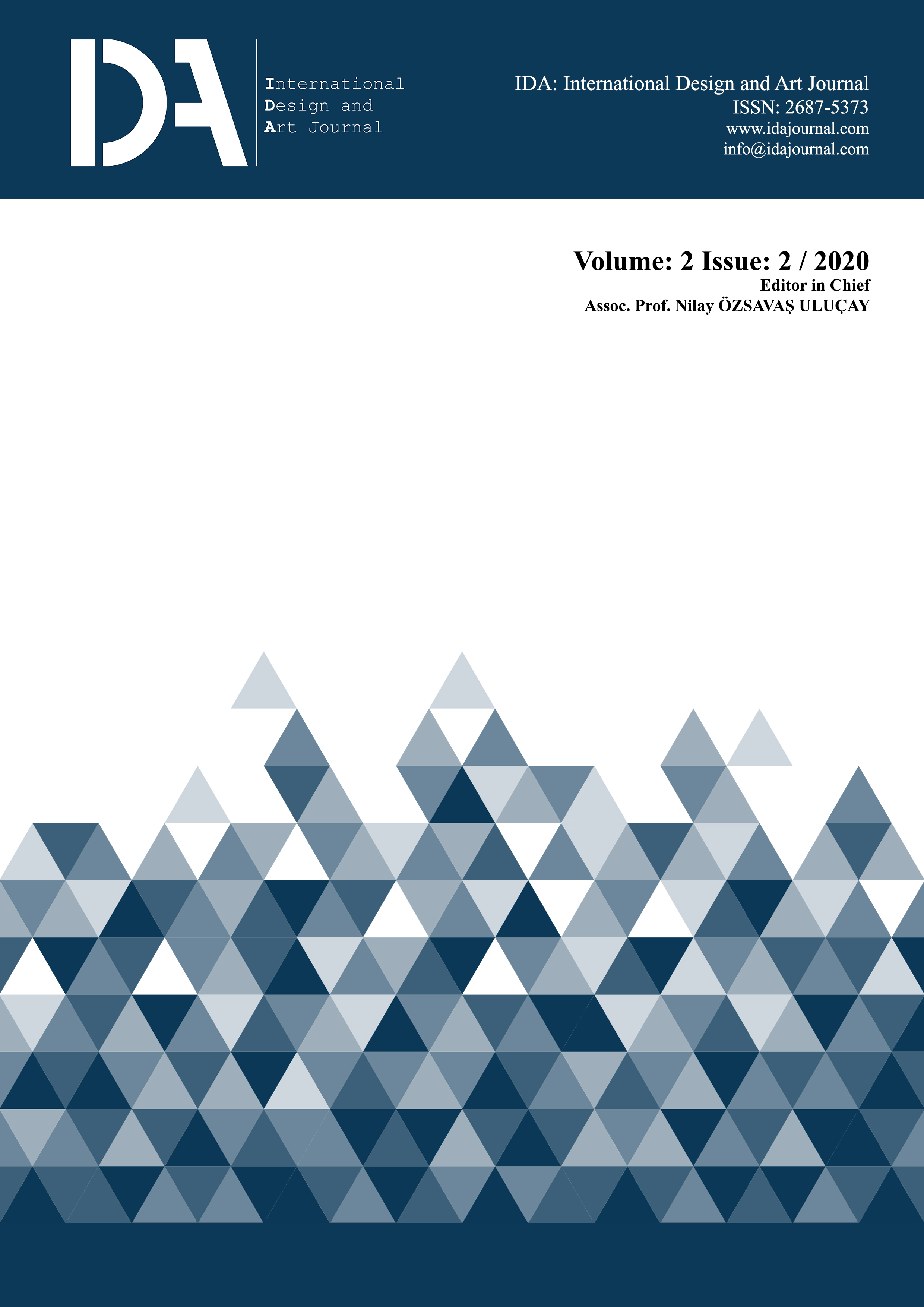The Art of Ayse Erkmen within the Context of Space and Object
Keywords:
Conceptual Art, Art Object, Space, Ayşe Erkmen, Contemporary ArtAbstract
After 1960’s, art has allowed the development of different art fields in parallel with social changes, and artists to adopt new expressions in order to express themselves. Concepts and thoughts have begun to replace the descriptions of aesthetic pleasure and beauty. As a result of mental and physical process, the reshaped art object has started to express itself through new experiences and places. Settling in ‘areas’, art went beyond the gallery and it also showed its existence through the unity of space and perception. The discipline of sculpture started to be questioned and interpreted by today’s contemporary art approach. The conceptual sculpture has been reshaped by benefiting from social, sociological, and philosophical facts which exist in bordered interior or public spaces. In this context, it is aimed to examine the relation of Ayşe Erkmen’s works, which she produced in different times and for different places, with space. In this study, the literature about Ayşe Erkmen’s works has been collected, reviewed and interpreted, within the context of space and objects used. With this research, Ayşe Erkmen’s one of the contemporary Turkish artists who reinterpreted the sculpture based on space- art perception and her approach to art object and space have been examined over her works. It is concluded that the works of the artist, which she produced in harmony with space and cannot be exhibited outside the space, are bringing up questions like: Is it possible to define the works of the artist that she produced in accordance with space and which cannot be exhibited outside the space, at the same time as art? Or is it not possible? Are they permanent? Or temporary? They interact with the audience and bare a pioneering understanding that inspirits the audience to think about the works.
References
Altuğ, E. (16.04.2017). Dolapdere’nin ‘Kıpraşım’ına Alt Üst Eden Bakışlar. https://www.gazeteduvar.com.tr/yazarlar/2017/04/16/dolapderenin-kiprasimina-alt-ust-eden-bakislar/ (08.12.2019).
Antmen, A. (2014). 20. Yüzyıl Batı Sanatında Akımlar, İstanbul: Sel Yayıncılık.
Atakan, N. (2008). Sanatta Alternatif Arayışlar. İzmir: Karakalem Kitapevi Yayınları.
Bourriaud, N. (2015). İlişkisel Estetik. İstanbul: Bağlam Yayıncılık.
Erkmen, A. (1997). Works. Warme Banke. http://ayseerkmen.com/works/ (24.05.2020).
O'Doherty, B. (2010). Beyaz Küpün İçinde, Galeri Mekanının İdeolojisi. İstanbul: Sel Yayıncılık.
Foster, H. (2015). Beyaz Küpün Ardından. Londra: London Review of Books. https://www.e.skop.com/skopbulten/beyaz kupun-ardindan/2443 (10.05.2020).
Krauss, R. (2002). Sanat Dünyamız, Sayı 82. İstanbul: Yapı Kredi Yayınları.
Meschede, F. (2008). Ayşe Erkmen. İstanbul: Yapı Kredi Yayınları.
Polat, N. (2017). Sınırları Aşındırmak Modernizm ve Çağdaş Sanat Üzerine. İstanbul: Belge Yayınları.
Sözen, M., Tanyeli, U. (2012). Sanat Sözlüğü. İstanbul: Remzi Kitapevi.
Türk Dil Kurumu Sözlüğü (TDK). https://sozluk.gov.tr (24.05.2020).
Wernwburg, B. (2011). Water for Venice. Deutsche Bank ArtMag No. 65 http://ayseerkmen.com/texts (24.05.2020).
Yılmaz, M. (2009). Postmodern Söyleşiler. Ankara: Ütopya Yayınevi.
Yılmaz, M. (2013). Modernden Postmoderne Sanat, Ankara: Ütopya Yayınevi.
Downloads
Published
Issue
Section
License
IDA: International Design and Art Journal is an open-access academic journal. All publishing rights of the accepted articles are deemed to assign to IDA: International Design and Art Journal. Articles can not be published and copied anywhere, and can not be used without reference.
IDA: International Design and Art Journal is licensed under a Creative Commons Attribution-NonCommercial-ShareAlike 4.0 International License.



